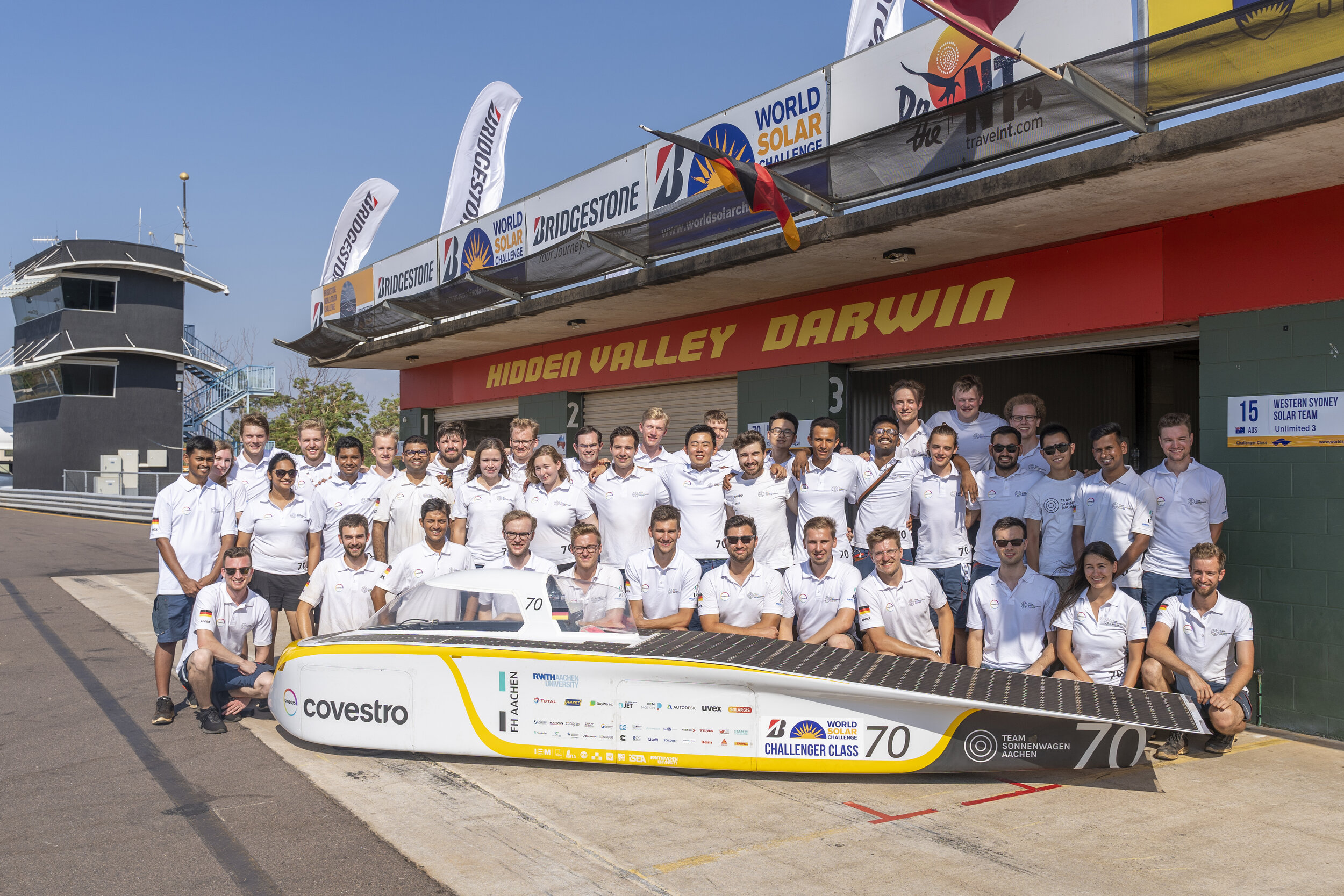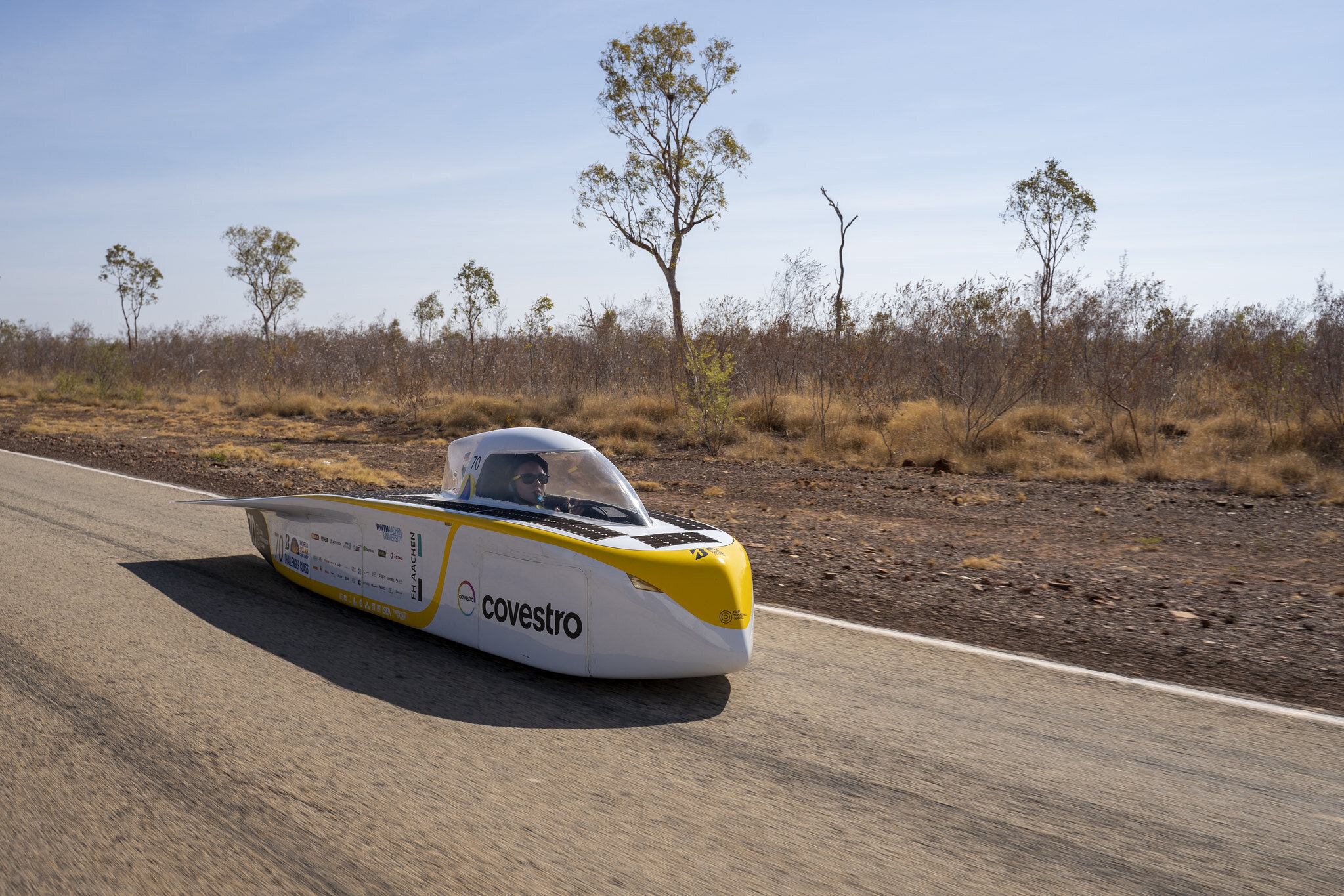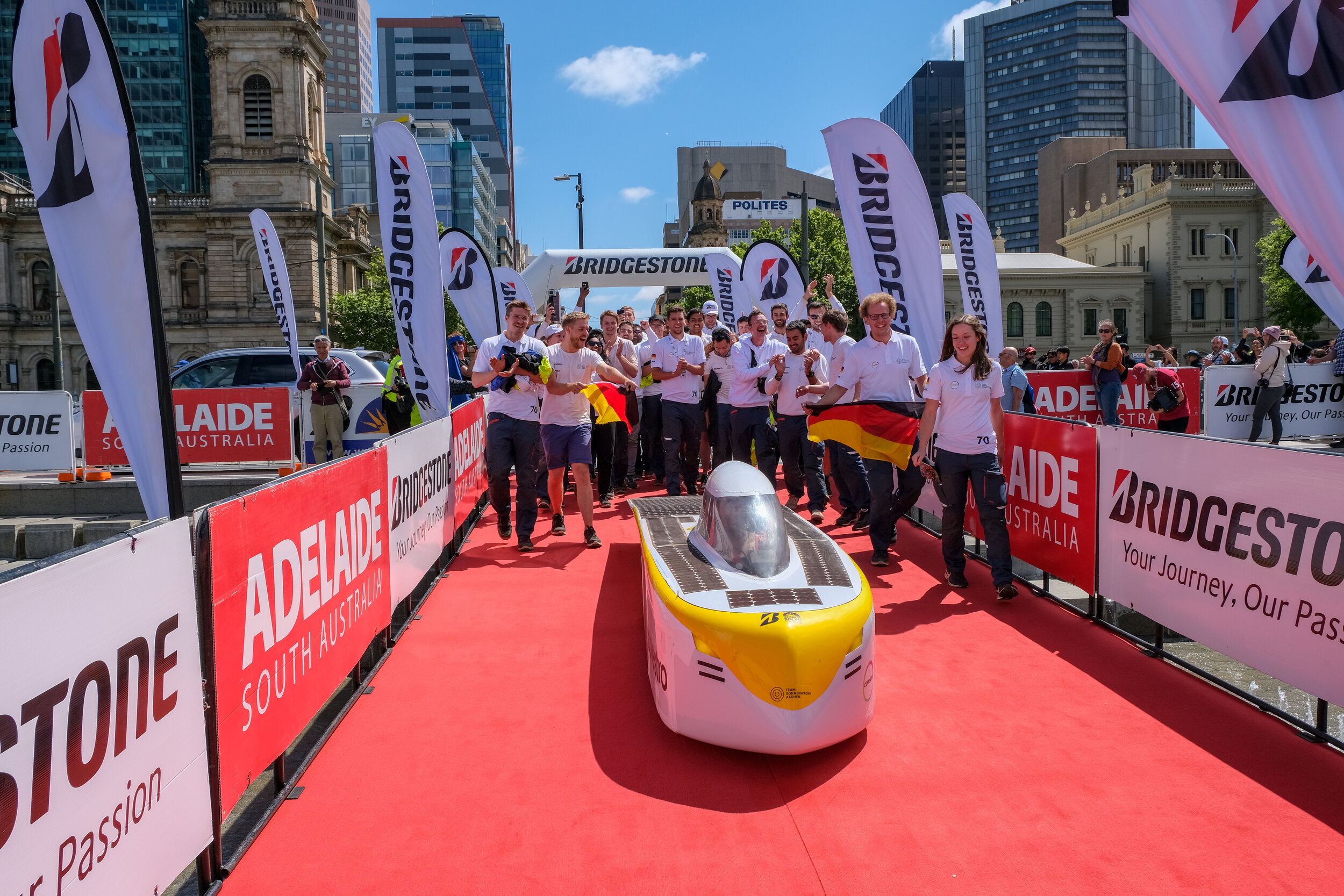
Covestro Sonnenwagen
The Australian veteran is equipped with space grade gallium arsenide solar cells, which bring an efficiency of more than 34% and are normally used on satellites. On top of the high-tech photovoltaics, the racer is able to steer all wheels in order to catch the wind, propelling it forward.
2019
Build year
GaAs
Type of solar cells
5 kWh
Lithium-Ion battery pack
144 km/h
Top Speed
2.64 m²
Area of the solar array
4
Number of wheels
164 kg
Total weight
> 34 %
Efficiency of the solar cells
All-wheel steering
Steering
Achievements
World Solar Challenge 2019
6th place
David Fewchuck Spirit of the Event Award
Events Safety Award
European Solar Challenge 2021
2nd place
Fastest lap of the race
European Solar Challenge 2022
2nd place

Download the factsheet
Technical highlights
Electrical engineering
The classic electric drive train consists of battery, inverter and motor. A solar car also has a solar panel and the associated power electronics. In the future, we will not only drive electrically, but may also “tank” our energy directly from the sun. To do this, we have first put together a solar panel of highly efficient solar cells that are otherwise only used in space travel. In this way, the main energy requirement of the Sonnenwagen can be covered during the race. To avoid having to stop directly when the sky is cloudy, we have also built a compact battery with a high energy density that allows the solar energy to be stored temporarily. Finally, in order to be able to convert the electrical energy into mechanical drive power, we developed an ironless axial flux motor. This is operated with an inverter specially optimised for solar racing cars.
In addition to the power supply, all electrical components communicate with each other via the vehicle electrical system. To enable the vehicle to be controlled, an on-board computer has been developed that communicates with all the vehicle’s electrical components. It functions as the interface between the vehicle and the driver. Among other things, electronics for reading the “accelerator pedal” were developed and the corresponding control of the inverter was programmed. At the same time, the computer collects all the messages and data that the electrical components communicate via the on-board power supply and makes them available to the accompanying vehicle of the sun car via radio. The corresponding hardware with the corresponding code was also developed and implemented for this purpose. In addition to reliability, the main focus of the circuit board design was on efficient implementation.
The 890 solar cells generate a yield of up to 1 kW with an efficiency of 34% and cover an area of 2.6 square metres. With the 5 kWh battery, the Sonnenwagen can cover 500 km at 90 km/h. The developed axial flux motor generates a nominal output of 3 kW.
– Christopher Herget, Head of Electrical Engineering (2019)
The all-wheel steering allows the Sonnenwagen to be optimally aligned with the wind direction and the closed carbon rims prevent additional air turbulence in the interior.
– Jan Wiartalla, Head of the Mechanical department (2019)
Mechanical engineering
The mechanics team has taken up the challenge of building an innovative and competitive racing car for the world’s toughest solar race within just two years. For this purpose, we are divided into expert groups such as chassis, steering, brakes and structure in order to contribute to the development in the best possible way, depending on personal skills and experience.
All departments of Team Sonnenwagen Aachen are in constant and close contact with each other to ensure that all individual developments ultimately fit together in a coherent overall concept. In this way, technical questions can be clarified immediately, interfaces can be defined and innovative solutions can be developed. We are convinced: a team is more than the sum of its members!
Aerodynamics
In the beginning is the Aero. To be successful at the World Solar Challenge in Australia, an aerodynamic design is essential.
We develop the outer shell of our vehicle and are therefore largely responsible for the overall concept and are in close contact with the other departments.
Our goal is to develop a low-resistance, stable design for our solar car that is optimized for driving performance. We are convinced that our development work will produce a first-class design thanks to state-of-the-art CFD simulations, wind tunnel tests, intelligent system integration and continuous model optimization.
The aerodynamic design of a wing allows us to use the sailing effect. Compared to the 2017 Sonnenwagen, we have halved the drag.
– Christoph Glasmacher, Head of the Aerodynamic department (2019)
5327 lines of code, 15 months preparation, 10^99000 possible speed profiles, 370 days weather data, 10 vehicle parameters.
– Felix Meyer, Head of Driving Strategy (2019)
Driving Strategy
This is where all information about the Sonnenwagen, the weather conditions and the course of the race comes together. Our strategists form the head of the team during the race. Using sophisticated algorithms and state-of-the-art measurement technology, they determine the optimum speed and steering angle of the Sonnenwagen.
The tasks include transmitting vehicle data, calculating the fastest and most energy-efficient speed and communicating with the driver and the rest of the team. In addition, this year the strategists are relying on their own weather and distance measurements as well as intelligent monitoring of the Sonnenwagen. In this way they are always one step ahead of the competition.
















